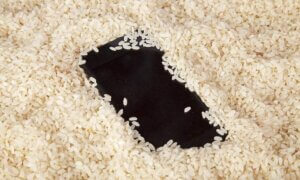The tariffs on goods imported from China have officially kicked in as of September 1st and, according to JP Morgan, these tariffs will impact the wallets of the average Americans quite hard: up to $1,000 a year. Since most tech products are manufactured in China, the tariffs will be felt even more by tech enthusiasts, especially those who prefer to use Apple products.
According to the National Retail Federation, the consumers will ‘feel the impact’ on a number of goods, ranging from milk, soybeans, oil to sports equipment and that there is potential for millions to lose their jobs and for less investments in general.
China also happens to be the largest automobile market: Tesla, BMW and Daimler are just three of the companies who have plants in China and they too will have to face a 25% tariff increase as of December.
Apple is one of the largest tech companies that will also be affected by these tariffs. As of September 1st, they have been imposed on desktop Macs, the Apple Watch, AirPods and the wireless Beats headphones as well as the HomePod. The iPhone is still eluding the tariffs for the time being but this is just a temporary state, unfortunately: the company will see a 15% tariff applied to the iPhones on December 15th but also to other products, including but not limited to the iPad, MacBook Air and Pro, Apple TV and the iPod Touch.
Apple is expected to help out the consumers best way it can. Analyst Ming-Chi Kuo believed that the company has made ‘proper preparations’ to absorb the tariffs for a while and that it will deal with most of the additional costs short-term. Apple’s prices are expected to remain largely unchanged for the U.S market, at least for the time being.
Apple CEO Tim Cook addressed the situation concerning Apple’s supply chain during the company’s earnings call, which took place last week and noted that they already have a ‘global’ supply chain, which hinted at the fact that Apple might not end up suffering too bad in the aftermath of the tariffs, even long-term.
“I know there’s been a lot of speculation around the topic of different moves and so forth. I wouldn’t put a lot of stock into those, if I were you. The way I view this is, the vast majority of our products are kind of made everywhere.” Cook said. “There’s a significant level of content from the United States, and a lot from Japan to Korea to China, and the European Union also contributes a fair amount. And so that’s the nature of a global supply chain.”
Follow TechTheLead on Google News to get the news first.





















